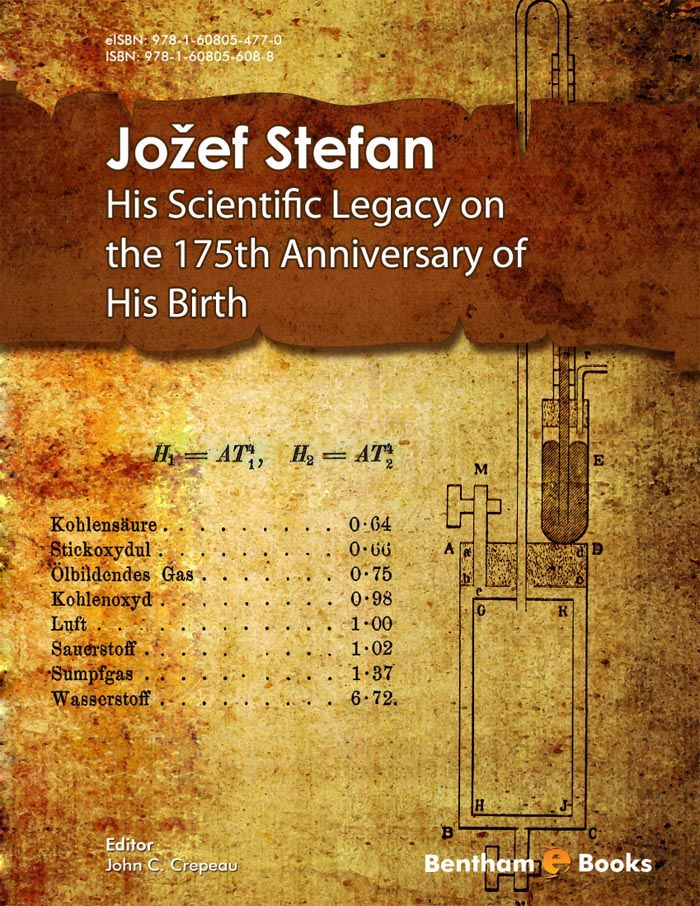A few years ago, I became interested in a variation of the solid-liquid phase change problem where melting was driven by the internal heat generation which occurred within the material. A common application of this problem is in the field of nuclear energy. For example, heat is generated by fission reactions within a nuclear fuel rod. Some questions arose: What is the heat required to start melting in the fuel rod? How does the motion of the melting front vary in time and how is its location dependant on the heat generation? We didn’t know it at the time, but we were working on a variant of what is known as the Stefan Problem. The solution was complicated by the internal heat generation term in the energy equation.
My colleague and I made halting progress on the solution. In fact, an earlier paper stated, “…the nonlinear character associated with the phase change process [with internal heat generation] makes the present problem extremely complex. It is not feasible to seek approximate analytical solutions…” [1]. We felt the problem to be challenging and particularly satisfying, and eventually we found an approximate solution, then showed through a numerical analysis that the approximate solutions were valid. In the paper we used a nondimensional variable called the Stefan number. Sometime later, I was asked to give a seminar on our work. For me, it is customary to bring a historical perspective in my presentations, so I dug around a little to find out more about this Jožef Stefan. After extensive investigation, I found out two things. First, there wasn’t much information about him. Second, this Stefan was the same person that discovered the T4 radiation law, known to students who take heat transfer, thermal physics or astronomy as the Stefan- Boltzmann law, of which the Stefan-Boltzmann constant is a part. I was startled when I found out this connection, and I started thinking how many other scientists have a law, a constant, a dimensionless variable and a problem named for them? The answer is not many. Well then, how could someone, whose name is associated with all of this scientific nomenclature, be virtually unknown?
Thus began my quest.
History has always interested me. I am not a trained historian, but I have felt that history, especially the history of science, has a place among practicing scientists and engineers. It can easily be incorporated into course lectures, and in my experience, students find the history of a particular phenomenon quite enjoyable when the topic is discussed. It breathes life into the subject, and students can appreciate the struggles and brilliance of early researchers.
The science and technology historian James Burke made the following remark regarding inventors, but it is easily applicable to scientists: “…no individual is responsible for producing invention ex nihilo. The elevation of the single inventor to the position of sole creator at best exaggerates his influence over events, and at worst denies the involvement of those humbler members of society without whose work his task might have been impossible” [2]. Jožef Stefan fits Burke’s description as one of “those humbler members of society”. He rarely traveled outside of Vienna and published almost exclusively in the local science journal. A simple love of, and honest devotion to teaching and research motivated him, not scientific fame. His students, however, are well-known to many: Ludwig Boltzmann and Sigmund Freud. He influenced Josef Loschmidt and Marian Smoluchowski, and in turn, Stefan’s students influenced many others. The work that Stefan and Boltzmann did on the radiation law became the foundation from which Max Planck built quantum mechanics.
The purpose of this eBook is two-fold. The first is to acknowledge Jožef Stefan and provide some well-deserved recognition. The second is to expose his influence in a wide variety of fields.
I wish to acknowledge the help of a number of people who helped with this eBook, especially, Jennifer O’Laughlin, Dustin Marshall, Ruprecht Machleidt, Wolfgang Reiter, Janez Strnad, Božidar Šarler, Ujjwal Shretha and Elaine Queener, as well as the Austrian Academy of Sciences. I am also indebted to my wife and children for their love and support.
John C. Crepeau
Moscow, Idaho
USA

